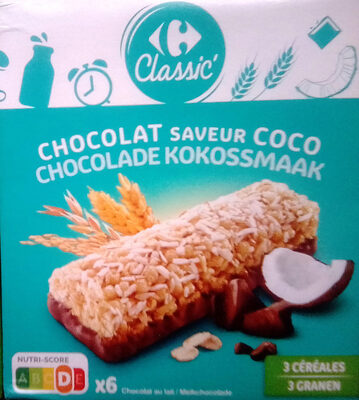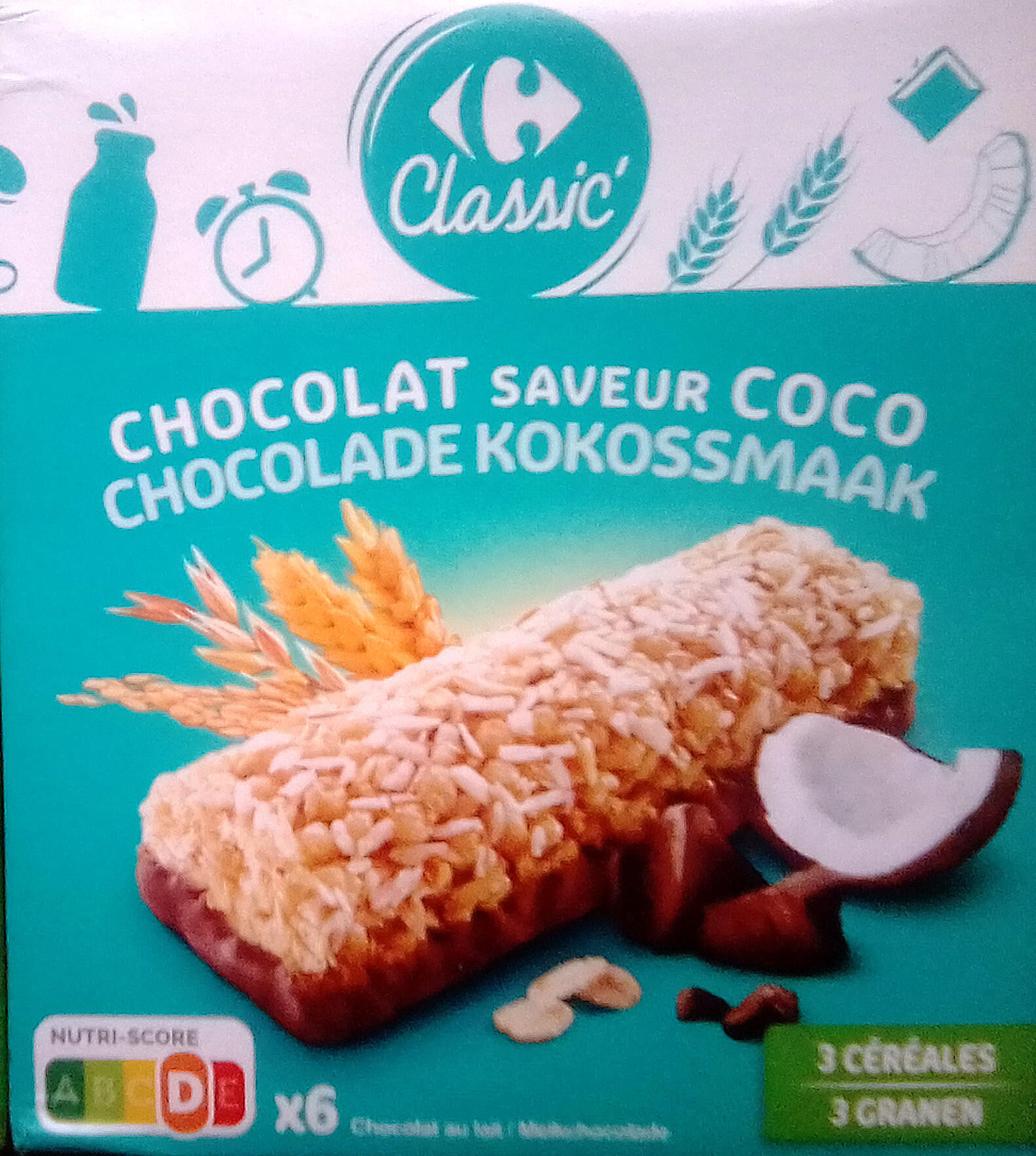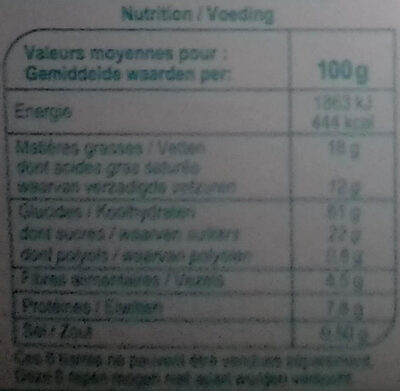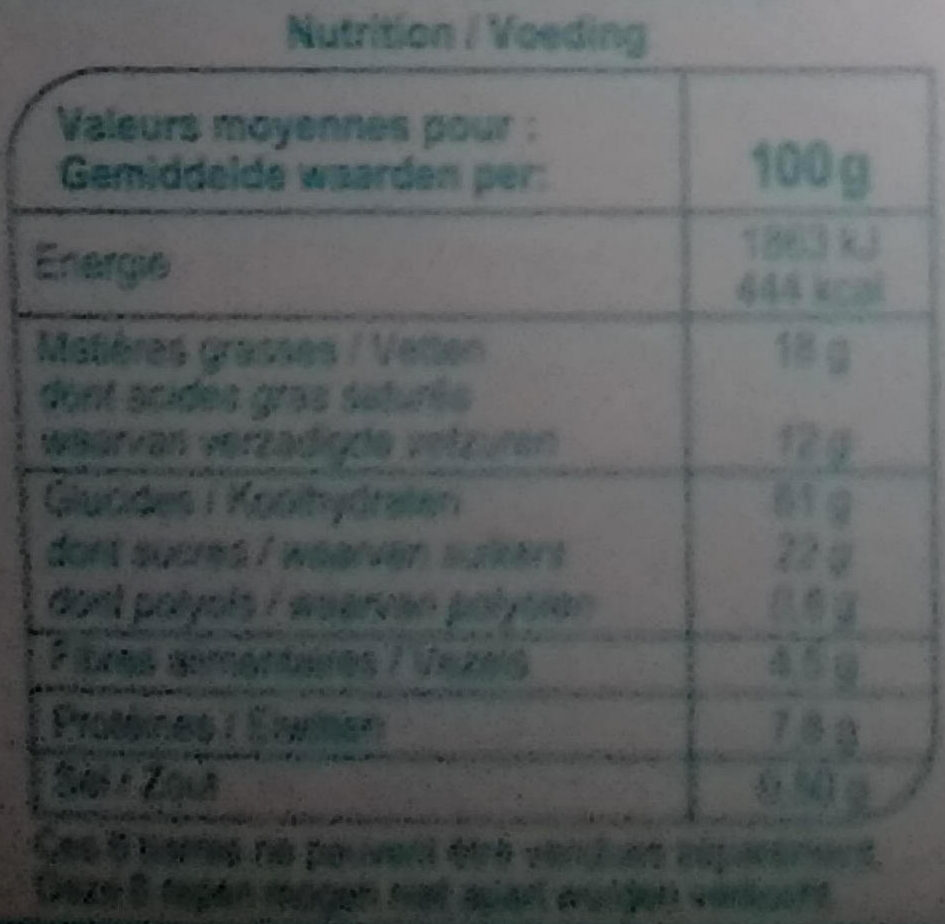Chocolat Saveur Coco🥥 - Carrefour Classic - 125 g
This product page is not complete. You can help to complete it by editing it and adding more data from the photos we have, or by taking more photos using the app for Android or iPhone/iPad. Thank you!
×
Some of the data for this product has been provided directly by the manufacturer Carrefour.
Barra-kodea: 3560071095659 (EAN / EAN-13)
Izen arrunta: Barres aux céréales (38%) avec un talon de chocolat au lait et noix de coco râpée, aromatisées.
Kopurua: 125 g
Ontziratzea: fr:Boite carton, fr:Sachet plastique
Markak: Carrefour Classic, Carrefour
Kategoriak: en:Snacks, en:Sweet snacks, en:Bars, en:Cereal bars, en:Chocolate cereal bars
Etiketak, ziurtagiriak, sariak: en:Made in Germany, Nutriscore, Nutriscore D
Manufacturing or processing places: Annecy
Dendak: Carrefour, E.leclerc, Auchan, Carrefour Market, Carrefour Contact, Carrefour City, Carrefour Express
Matching with your preferences
Other information
Conservation conditions: À conserver à l'abri de la chaleur et de l'humidité. À consommer de préférence avant le : voir sur le côté de l'étui.
Customer service: Interdis - TSA 91431 - 91343 MASSY Cedex - France.
Report a problem
Datuen iturria
Product added on by kiliweb
Last edit of product page on by thaialagata.
Produktuaren orria -gatik editatua asmoth, bugmenot, date-limite-app, dorado-jerome, ecoscore-impact-estimator, feat, hugopeuze, moon-rabbit, openfoodfacts-contributors, org-carrefour, packbot, quechoisir, roboto-app, segundo, teolemon, yuka.IZISA9SlQdUCIMPJ0a8L_ASlDdjfCedZJCZRow, yuka.SHZrZE9iby8vK3N6c01NeThEL2VvYzk0dzhTS1lVT2xjTm8ySVE9PQ, yuka.ZElzckZZb0hvZHBUZy8wUXdRUDh3ZTlNbG8zNWMwN3FETWtXSVE9PQ, yuka.sY2b0xO6T85zoF3NwEKvlkxmf_31uAKfEx7jh2So-eu8F7DscPJP2KbIaqs, yuka.sY2b0xO6T85zoF3NwEKvllNCSsr4rgOUMjXUgXKP9_KBFKDJZo537aXab6o.












